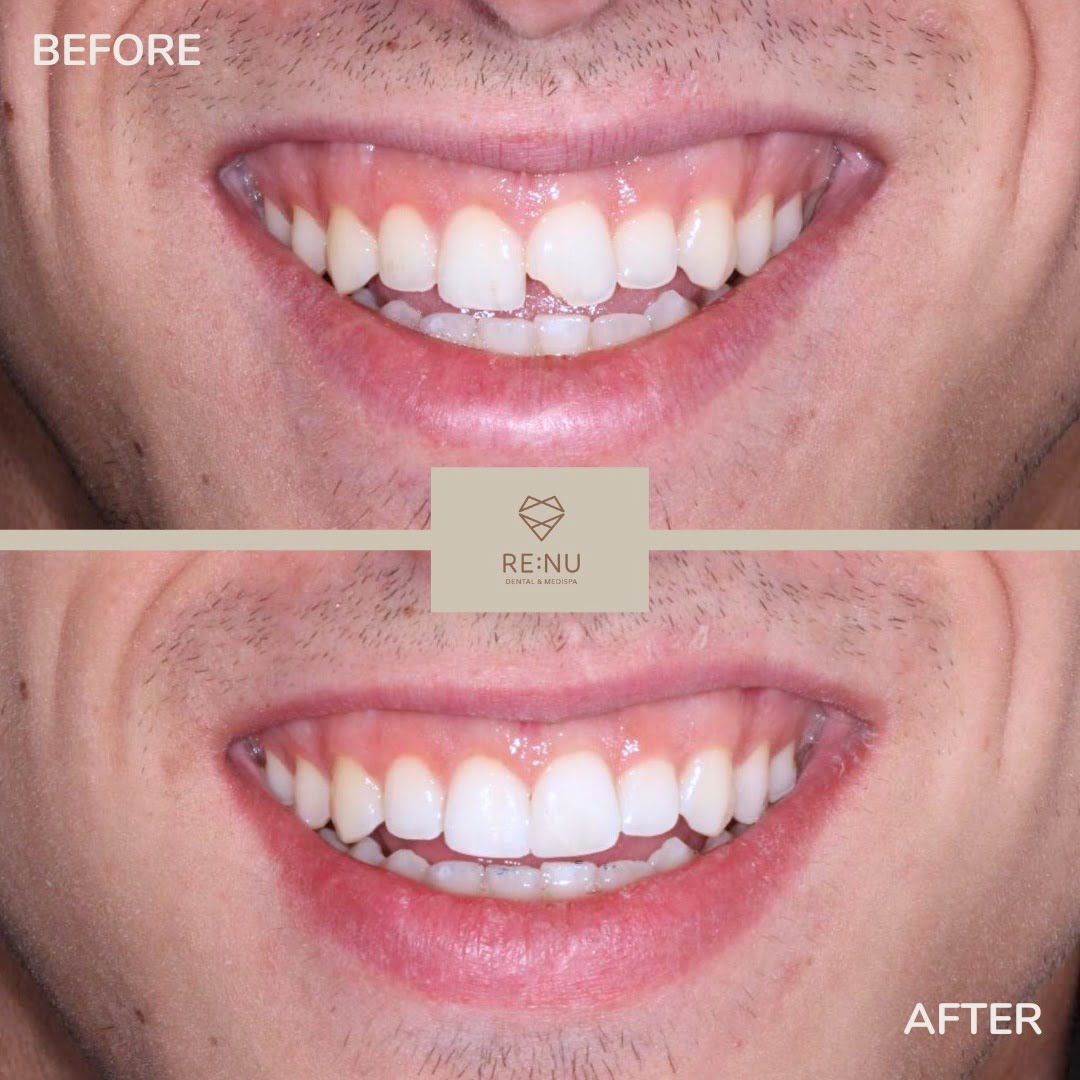Composite bonding is a prominent cosmetic dental procedure designed to enhance the appearance and functionality of teeth. This technique involves the application of a tooth-coloured composite resin to repair various dental imperfections, including chips, decay, discolouration, and fractures. The composite resin used in this procedure is a highly versatile material known for its durability and aesthetic appeal, closely mimicking the natural appearance of teeth.
Historically, dental bonding has evolved significantly. The inception of composite bonding dates back to the mid-20th century when advancements in dental materials began to revolutionise cosmetic dentistry. Initially, the materials used were not as refined and often lacked the natural look and strength required for long-lasting dental repairs. However, continuous research and development have led to the creation of modern composite resins that offer superior durability, strength, and a seamless blend with natural teeth.
The purpose of composite bonding extends beyond mere aesthetics; it also plays a crucial role in restoring the structural integrity of damaged teeth. This procedure is minimally invasive, often requiring little to no removal of the original tooth structure, which makes it an attractive option for patients seeking quick and effective dental repairs. The application process typically involves etching the tooth surface, applying an adhesive, and then molding the composite resin to the desired shape before curing it with a specialized light.
In summary, composite bonding stands out as a valuable cosmetic dental solution, providing both aesthetic enhancements and functional restorations. Its evolution over the years has cemented its place in modern dentistry, offering patients a reliable and visually pleasing option for maintaining their dental health and appearance.
The Composite Bonding Procedure
Composite bonding is a versatile dental procedure that addresses various cosmetic concerns, such as chipped, discolored, or misaligned teeth. The process begins with an initial consultation, during which the dentist evaluates the patient’s dental health and discusses their aesthetic goals. This consultation is crucial for setting realistic expectations and creating a tailored treatment plan.
Once the plan is established, the preparation phase begins. The dentist starts by thoroughly cleaning the teeth to remove any plaque or debris. This step is essential for ensuring a strong bond between the resin and the natural tooth. Following the cleaning, the dentist selects a resin shade that closely matches the patient’s natural teeth. This careful selection process ensures that the final result blends seamlessly with the surrounding teeth.
The actual bonding process involves several meticulous steps. First, the dentist applies a gentle phosphoric acid solution to the surface of the tooth to etch it. This etching process creates a rough surface, allowing the resin to adhere more effectively. Next, the dentist applies the composite resin to the tooth in small, incremental layers. Each layer is carefully molded and shaped to achieve the desired contour and appearance.
Once the resin is appropriately shaped, a special curing light is used to harden each layer. This light activates the resin’s chemical properties, enabling it to set quickly and form a durable bond. The dentist may repeat the layering and curing process several times to build up the resin to the correct thickness and shape.
After the resin is fully cured, the dentist performs the final touches. This includes trimming any excess resin and polishing the bonded teeth to achieve a smooth, glossy finish. The polishing step is crucial for ensuring that the bonded teeth match the natural sheen of the surrounding teeth. The result is a natural-looking, aesthetically pleasing smile that enhances the patient’s overall appearance.
Benefits and Drawbacks of Composite Bonding
Composite bonding offers a variety of advantages, making it a popular choice for cosmetic dental procedures. One of the primary benefits of composite bonding is its minimally invasive nature. Unlike other dental solutions such as veneers or crowns, composite bonding requires less removal of the tooth’s natural structure. This preservation of the tooth is advantageous for individuals seeking to enhance their smile without significant alterations.
Cost-effectiveness is another critical advantage. Composite bonding is generally more affordable than other cosmetic treatments, making it accessible to a broader range of patients. Additionally, the procedure typically yields immediate results. Patients often leave the dental office with a transformed smile after just one visit, significantly boosting self-confidence and satisfaction.
Composite bonding can considerably improve the appearance of teeth. It is effective in addressing various dental issues, including discoloration, minor chips or cracks, and gaps between teeth. By enhancing the aesthetic appeal of the teeth, composite bonding can lead to improved self-esteem and overall quality of life.
However, there are potential drawbacks to consider. One of the limitations is the possibility of staining over time. Composite resin is more susceptible to discoloration from foods and beverages compared to porcelain used in veneers or crowns. To maintain the appearance, patients may need to avoid staining substances and practice good oral hygiene.
Another consideration is the need for occasional maintenance. Composite bonding may require touch-ups or replacement every few years, depending on the individual’s habits and the material’s wear and tear. Additionally, composite bonding is not as durable as other dental solutions like veneers or crowns. It can be more prone to chipping or breaking, particularly for those who grind their teeth or bite on hard objects.
When compared to alternative treatments, composite bonding stands out for its affordability and quick results. Veneers and crowns, while more durable and resistant to staining, involve a more extensive and costly procedure. Each option has its unique set of benefits and drawbacks, and the choice largely depends on the patient’s specific needs and circumstances.
Caring for Your Composite Bonding
Proper aftercare is essential to maintain the longevity and aesthetic appeal of your composite bonding. Adhering to specific guidelines can help ensure your bonded teeth remain in optimal condition. First and foremost, daily oral hygiene practices should be a priority. Brushing your teeth at least twice a day with a non-abrasive toothpaste can help prevent damage to the composite resin. Additionally, flossing daily is crucial to remove plaque and food particles from between teeth, which can contribute to the deterioration of the bonding material.
Dietary considerations play a significant role in the care of composite bonding. It is advisable to avoid foods and beverages that are known to stain, such as coffee, tea, red wine, and certain berries. These substances can discolor the resin, leading to a less appealing appearance. When consuming potentially staining foods and drinks, using a straw can help minimize contact with the bonded areas.
Regular dental check-ups and professional cleanings are imperative for maintaining the health of your composite bonding. Visiting your dentist at least twice a year allows for early detection of any issues and professional cleaning can help keep your bonded teeth looking their best. During these visits, your dentist can also polish the composite material to restore its original shine and smoothness.
In addition to these practices, being mindful of your habits can prevent damage to the bonded areas. Avoid biting into hard objects such as ice, nuts, or hard candies, as this can cause chipping or cracking of the composite resin. Furthermore, using your teeth as tools to open packages or bottles should be strictly avoided to prevent unnecessary stress on your bonded teeth.
By incorporating these guidelines into your daily routine, you can significantly enhance the durability and aesthetic appeal of your composite bonding, ensuring a lasting and beautiful smile.

